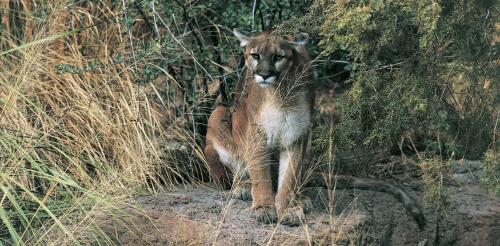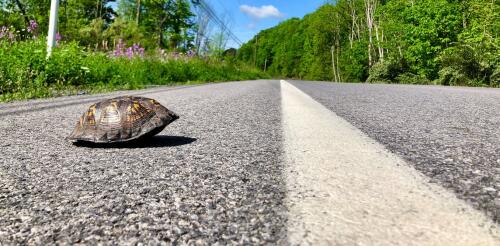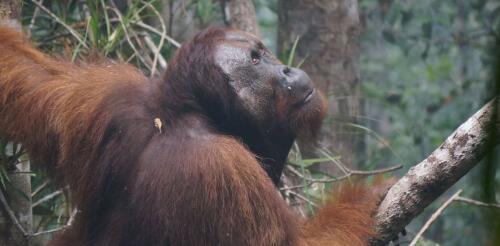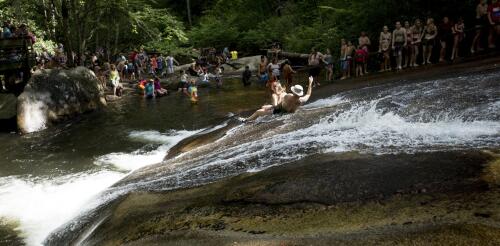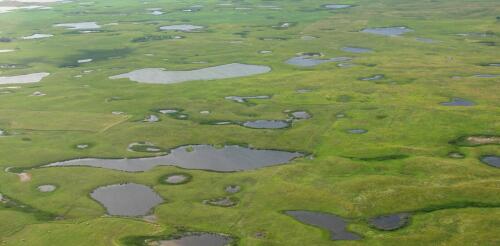Wildlife
Hunting large carnivores is a contentious issue in wildlife management and conservation. It’s on the ballot in fall 2024 in Colorado, where voters will consider Proposition 127, a proposed ban on hunting and trapping of mountain lions, bobcats and lynx in the state. Wildlife agencies often use regulated hunting as a tool for controlling carnivore populations, reducing their impacts on vulnerable wildlife or minimizing the risk of conflict between carnivores and people, pets and livestock. But scientific studies have questioned how effectively recreational hunting achieves these goals. And public attitudes are shifting as participation in hunting declines. We direct Colorado State University’s Center for Human-Carnivore Coexistence and Animal-Human Policy Center. Together with our colleague Benjamin Ghasemi, we recently surveyed Colorado residents about their perceptions of hunting mountain lions and black bears in the state. We found that support for hunting depen...
For anyone who enjoys nature, summer is a fascinating time to be outside. Animals are on the move: Turtles are nesting, baby birds are testing their wings, snakes are foraging and young mammals are emerging. In central Pennsylvania, where I live, last year’s hatchling painted turtles have overwintered in their nests and emerged looking like tiny helpless snacks for raccoons and ravens. I’ve already rescued a baby killdeer – a shorebird that nests in parking lots – that ran off the road and got stuck in a grate. And I’ve watched an eastern chipmunk prey on a nest of towhee chicks. I moved the killdeer to safety because it had fallen into what we call an “ecological trap.” Humans create these traps when we degrade habitat that looks suitable to animals. For killdeer, parking pads and roofs give off all the vibes of a great nesting site – except for the drains – and they have less natural habitat available these days. But I d...
Bornean orangutans are one of three orangutan species, all critically endangered. They thrive in carbon-rich peat swamp forests on the Indonesian island of Borneo. These habitats are also the sites of massive wildfires. Indonesian wildfires in 2015 caused some of the worst fire-driven air pollution ever recorded. The fires were driven by an El Niño climatic cycle, which caused especially dry weather in the region. Compared to other wildfires, peatland fires smolder underground and produce exceptionally high levels of hazardous gases and particulate matter – a leading cause of global pollution-related deaths and illnesses. Orangutans are well known as an “indicator species” – one that can serve as a proxy for the health of an ecosystem. Changes in their environments often cause conspicuous changes in the apes’ health and behavior. Frequent and persistent exposure to toxic smoke could have severe consequences for orangutans and other wildlife....
Outdoor recreation is on track for another record-setting year. In 2022, U.S. national parks logged more than 300 million visits – and that means a lot more people on roads and trails. While research shows that spending time outside is good for physical and mental health, long lines and gridlocked roads can make the experience a lot less fun. Crowding also makes it harder for park staff to protect wildlife and fragile lands and respond to emergencies. To manage the crowds, some parks are experimenting with timed-entry vehicle reservation systems and permits for popular trails. For all of their popularity, national parks are just one subset of U.S. public lands. Across the nation, the federal government owns more than 640 million acres (2.6 million square kilometers) of land. Depending on each site’s mission, its uses may include logging, livestock grazing, mining, oil and gas production, wildlife habitat or recreation – often, several of these at once. In con...
The U.S. Supreme Court has ruled in Sackett v. EPA that federal protection of wetlands encompasses only those wetlands that directly adjoin rivers, lakes and other bodies of water. This is an extremely narrow interpretation of the Clean Water Act that could expose many wetlands across the U.S. to filling and development. Under this keystone environmental law, federal agencies take the lead in regulating water pollution, while state and local governments regulate land use. Wetlands are areas where land is wet for all or part of the year, so they straddle this division of authority. Swamps, bogs, marshes and other wetlands provide valuable ecological services, such as filtering pollutants and soaking up floodwaters. Landowners must obtain permits to discharge dredged or fill material, such as dirt, sand or rock, in a protected wetland. This can be time-consuming and expensive, which is why the Supreme Court’s ruling on May 25, 2023, will be of keen interest to developers,...
